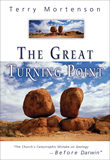Glenn Morton: A Misrepresentation of History?-A short rebuttal
Recently Glenn Morton has been promoting his web article entitled 'John Murray: A Misrepresentation of History.'
Recently Glenn Morton has been promoting his web article entitled “John Murray: A Misrepresentation of History.”1 Morton claims to have formerly been a young-Earth creationist but is now strongly opposed to AiG and other creationist ministries. In his article Morton criticizes my handling of the historical evidence related to John Murray, an early 19th century “Scriptural geologist” who was opposed to the old-Earth geological theories that were being developed at that time and wrote about his objections in a book in 1840. Morton attempts to show that Murray was not as geologically competent as I say he was, in fact that Murray was quite out of date and uninformed in his views.
I have responded point-by-point to his article in a longer response (click here to read the longer response.) In this current article, I will briefly summarize Morton’s argument and my response.
Morton first says that he got a copy of an 18-page paper that I wrote and presented at a conference in November 2001, which was a summary of my 500-page Ph.D. thesis about the “Scriptural geologists.”2 Right here at the beginning of Morton’s criticisms I was alerted to his less than careful method of investigation, for he says (as he also told me in an email on Dec. 30th) that he got a copy of my paper from his son who got it from me in Denver. The conference was in Colorado Springs, and though I was in Denver for 40 hours after the conference I neither met his son nor gave him my paper. Morton’s criticisms of Murray’s thoughts communicated in his 1840 book (The Truth of Revelation) reveal a similar lack of careful attention to detail.
Morton’s criticisms
Morton discusses five points that he says show Murray’s failure to use known facts of his day in his thinking about geology, Noah’s Flood and the age of the Earth, thereby proving Murray’s geological incompetence. Morton’s points are:
- Murray failed to apply the known density of the Earth to his flood model.
- Murray failed to apply the thermal observations of mines getting hotter the deeper one went to his Flood theory.
- Murray failed to deal with or accept the stratification of the fossils which had been developed by William Smith 35 years earlier.
- He failed to apply his knowledge of pressure to his model of the Flood.
- He failed to inform his readers of Agassiz’s theory that glaciers, not the Flood, produced the loose detritus and boulders scattered on the surface of the Earth.
What I show in my rebuttal is the following:
- Murray’s “failure” to deal with topics, which Morton thinks are important, in the less than 20 pages that Murray devotes to geology in his 380-page book does not reveal geological ignorance on Murray’s part, but rather unreasonable demands by Morton 161 years later.
- Morton’s points 1, 2, 4 and 5 had nothing to do with the development of old-Earth geological theories. So it is not surprising that Murray would not deal with these issues. But even in these points Morton makes a number of erroneous statements and manipulates his quotes of Murray to say something that Murray did not say clearly, if even implied. Furthermore, in the short section of his 1840 book dealing with geological matters (or in his 1838 book devoted to the subject, for that matter) Murray did not develop a “Flood theory,” as Morton keeps suggesting. He simply expressed his Biblical and geological reasons for rejecting the old-Earth theories and believing the Biblical account of a recent creation and global Noachian Flood.
- Agassiz’s glacial theory was much in debate in 1840 (the year Murray’s book was published) and was not widely accepted until after 1844, so Murray cannot be faulted for not telling his readers about it.
- Morton makes a number of misleading or erroneous statements about William Smith’s contribution to the development of the so-called “geological column” and the idea of an old Earth. There are serious problems with Smith’s method of using fossils to give relative dates to the strata. Murray believed the Word of God was the only infallible source of truth, so did not feel compelled to accept Smith’s and any other old-Earth geologist’s interpretation of the geological evidence, since those interpretations were based on anti-biblical philosophical assumptions.
Conclusion
For all these reasons and those outlined in my detailed response we must conclude that Morton’s handling of the historical evidence seems to fit his handling of the geological evidence. It is he, not I or John Murray, who is misleading readers. Morton’s thinking has clearly been influenced by old-Earth philosophical assumptions and by what I believe I have here demonstrated are his own less-than-careful observations and inadequate investigations. Therefore, his criticisms of Murray and my writings about Murray and the other “Scriptural geologists” should be viewed in the light of those serious deficiencies. Murray was not a geologist. But by reading and fieldwork he, like several other “Scriptural geologists,” was very competent to judge the validity of the evidence used to argue that the Earth was much older than the Bible teaches.
Footnotes
- His article is at http://home.entouch.net/dmd/murray.htm.
- T. J. Mortenson, “British Scriptural Geologists in the first half of the Nineteenth Century” (Ph.D. thesis, Coventry University, 1996). This is available from the British Library Thesis Service either on microfilm for loan or on paper for purchase. A shortened version of my PhD thesis is The Great Turning Point: The Church’s Catastrophic Mistake on Geology—Before Darwin.
Recommended Resources

Answers in Genesis is an apologetics ministry, dedicated to helping Christians defend their faith and proclaim the good news of Jesus Christ.
- Customer Service 800.778.3390
- © 2024 Answers in Genesis




